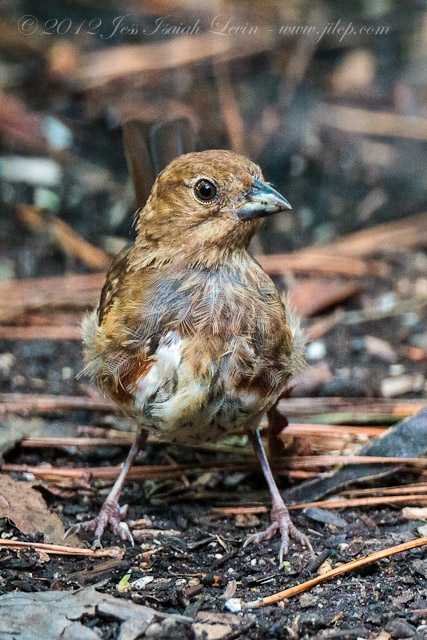At the Museum of Life and Science in Durham, NC, mentioned in my last post, there is a terrific butterfly house, where tropical species live, breed, and roam freely. There is also one family of birds which are not a threat to the butterflies. I photographed many of them yesterday, and have a few to show here now. First is the Paper Kite (
Idea leuconoe, from Southeast Asia). It think it may be the very one that I pictured emerging in the
previous post.
Here's a section of the same shot to show you the details of the head ("facial features", to anthropomorphize).
This adult bird (maybe a variety of Guinea Fowl? Sorry, I need to research this!) ran through the underbrush with two young in tow. I barely had time for this one shot, which is not artistic but should be good for an ID.
A pair of owl butterflies (
Caligo memnon, Central and South America) posed in proximity.
Here's a Postman (Heliconius erato):
I'm not sure what the next bunch are. I hope to get back to the site soon to find out. If you know any of them, please leave a comment below! I would make a terrible field lepidopterist, but I love to photograph them.
The top and bottom of this species (pics above and below) are equally fascinating!
Finally, and I think fittingly as an homage to the Curiosity mission to Mars, I photographed a relic of a much earlier part of our space program. This is one of the first boosters used to launch sub-orbital flights. Astronaut Alan Shepard rode atop one in the Mercury Capsule, May 5, 1961. The later orbital flights used a two-stage Atlas rocket.
Although North Carolina famously has a lot of red clay, this is, as far as I know, the only location in the state that has a true Redstone, i.e., a Redstone rocket!
To get the perspective I wanted, I shot with a 15 mm fisheye lens. I positioned things in the frame ("aiming" the rocket) in a way that minimized the curvature of straight lines, but showed the actual curves of the fins and got in some of the sweep of clouds in the sky. Unlike a "normal" (rectilinear) lens, this fisheye curves straight lines in order to get in a 180º angle of view across the diagonal limits of the frame. However, lines that intersect the center of the lens axis - that is, lines radiating from the center of the picture - remain straight.
Permalink:
http://jilcp.blogspot.com/2012/08/more-butterflies-and-big-bird.html
www.jilcp.com





















































